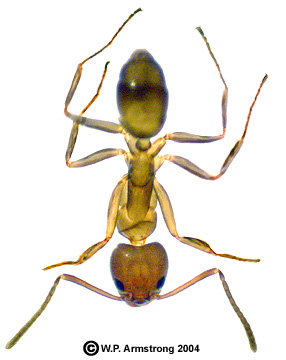
Scientific Name: Linepithema humile
Classification:
Class: Insecta
Order: Hymenoptera
Family: Formicidae
Subfamily: Dolichoderinae
Identification:
The wingless worker ant is 2-3 mm long and light to dark
brown. The queen and males are slightly larger and
darker.
There are a
variety of detailed characteristics that
differentiate the Argentine ant from other species.
- Five to eight large teeth line the mandibles.
- The eyes are below the widest point of the head.
- The antennae are divided into twelve segments, with the first segment being equal to the length of the head.
- One node separates the hind body segments.
- The body surface of the ant is smooth and lacks hair on the dorsum of the head and thorax.
- The ant has no sting.
- Argentine ants trails are often at least five ants wide, and they can be seen traveling up trees and buildings in search of food.
- When crushed, the arthropod gives off a musty smell (versus the acidic smell most ants have).
Original
Distribution:
The Argentine ant is native to Northern Argentina, Southern Brazil,
Uruguay, and Paraguay. Most samples of the introduced ranges in
the Southeastern United States and California are genetically related
to
populations from the Southern Rio Parana in Argentina.
Current
Distribution:
L. humile was accidentally introduced in all locations where it has
invaded. The ant is found on all continents except Antarctica, as
well as on many oceanic islands. It has invasive
populations in
Australia, Bermuda, Chile, Cuba, France, Italy, Japan, Mexico, New
Zealand, Peru, Portugal, South Africa, Spain, Switzerland, United Arab
Emirates, and the United States. Argentine ants in the
continental United States occupy locations from California to the
Southeastern States. In Hawaii, L. humile has populations on Maui
and the Big Island.
Site
and Date of Introduction:
United States - The ant
was first
recorded in the United States by E. Foster in 1891. L. humile is
believed to have entered the United
States in
New Orleans around the early 1890's. It was first sighted in
California in 1907. The species probably entered Hawaii in the
1940's.
The list includes:
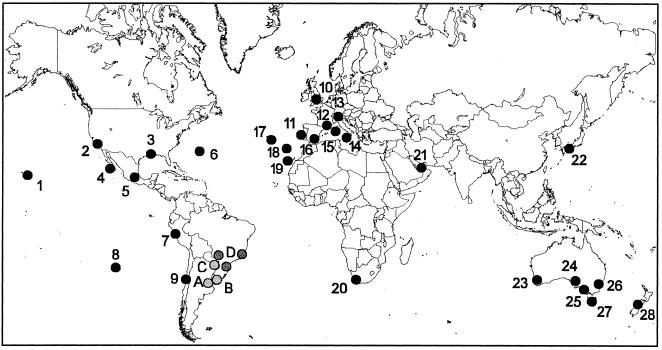
- Australia (1939)
- Bermuda (1949)
- Chile (1910)
- Cuba (1995)
- France (1905)
- Italy (1926)
- Japan (1993)
- Mexico (1946)
- New Zealand (1990)
- Peru (1974)
- Portugal (1900)
- South Africa (1901)
- Spain (1923)
- Switzerland (1980)
- United Arab Emirates (1995)
Mode(s) of
Introduction:
The primary mode of introduction is probably
shipping. It is believed the ant came to Louisiana through
Argentine
shipments of coffee or sugar. It spread across the southern
states, most likely by train, and eventually moved into
California. The ant was probably introduced to Hawaii by way of
goods shipped from California.

Reason(s)
Why it has Become Established:
Argentine ants are able to establish new
colonies with as little as ten worker ants and one queen.
Introduced populations differ from native
populations. In their native habitat, genetically
diverse territorial colonies fight for resources. In
introduced habitat, genetic similarity has led to
"supercolonies". In these population structures the ants do not
fight with each other, but rather
spend their time and energy foraging and out competing native ants for
food and habitat. L. humile colonies exhibit higher
densities than do colonies of species native to the U.S.
Introduced
colonies are polygynous, meaning they have more than one
reproductive queen within a colony. Polygyny allows them higher
rates of reproduction and allows the "extra" queens to branch off
with worker ants to establish additional nests. Introduced
populations form new colonies by budding (wingless queens and workers
travel
on the ground
to a form a new nest) and jumping (movement by human transport).
In native colonies, queens and males fly
to a new site, which
enhances genetic diversity (and thus, intraspecific competition).
The Argentine ant is omnivorous, although it mainly feeds on the
honeydew
produced by
smaller insects like aphids. A general diet has allowed the ant
to survive in a variety of habitats. They prefer areas that are
moist
year round, and are often found under logs, rocks, or refuse.
They are often found around humans due to their affinity for moist
conditions.
Ecological
Role:
L. humile is an extremely competitive species of "tramp"
ant that often
displaces native species when introduced. Invasive colonies have
a very high density that allows them to out compete native
species. Queens may lay up to 60 eggs a day. Since there
can be many queens in a nest, reproduction is
prolific. L. humile may survive in tropical to temperate
climates. It prefers moist habitat and is found near people in
dry habitats, such as Southern California. Cold temperatures and
aridity limit its range.
Benefit(s):
L. humile has had mostly negative effects on invaded ecosystems.
However, it has been suggested as a biological control
agent in the spread of the pine processionary moth (Thaumetoppoea
pityocampa) in Portugal. Ants in general perform a variety of
important roles in ecosystems, such as
aerating the soil, breaking down organics, and protecting aphids that
provide them with food.
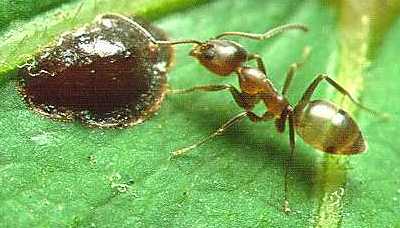
Threat(s):
L. humile is a threat on many levels to native ecosystems. It
out competes many native ants for food and habitat. It has been
negatively associated with arthropod diversity in the areas it has
invaded. In
Southern California the ant has replaced harvester ants in many
areas. Animals higher up the food chain that prey on native ants
may be negatively affected by the presence of L. humile. Recent
studies have suggested that decreasing numbers of coast horned lizards
(Phrynosoma coronatum) and shrews (Notiosorex crawfordi) are related to
the
presence of L. humile. The ants may also feed on the eggs
of native amphibians, reptiles, and birds. Native plants that
depend on native ants for seed dispersal are negatively affected by the
presence of L. humile. Argentine ants can also cause direct and
indirect damage to crops. In South Africa they prey upon bees and
steal honey. They feed on the fruits and buds of different
plants, such as citrus trees. They cause indirect damage by
protecting smaller insects, such as aphids, that may feed on
crops. Argentine ants are considered a major pest to people in
areas they have invaded.
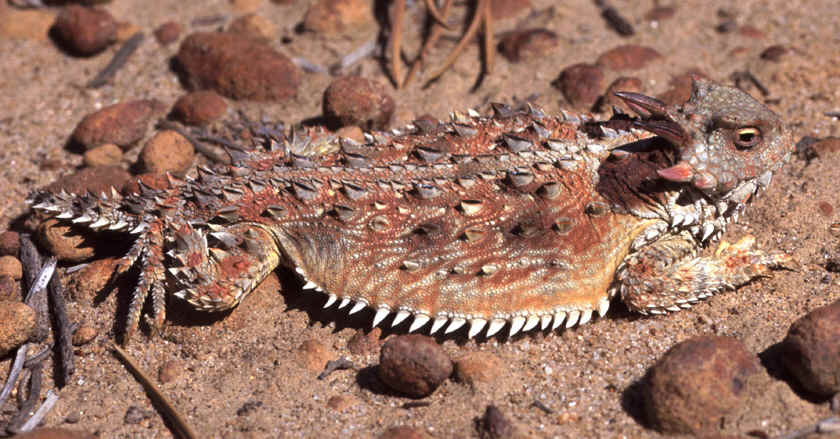
Control
Level Diagnosis:
L. humile should be actively controlled and eliminated in areas it has
recently invaded. Since the ant is capable of a high level of
damage, eliminating introduced
populations in new areas should be given the "Highest Priority".
L. humile invasion can result in large economic and ecologic
costs. Based on studies from previous invaded habitats, it has
been shown that the ant can cause decline of arthropod
diversity, local extinction, decline of animals higher up in the
food chain, decline in native plant species, and significant direct
and indirect damage to crops. L. humile is commonly found
in and around human structures. Increased human presence may
increase populations and spread of argentine ants by providing
increased moisture due to runoff and by offering additional
opportunities for jump dispersal. As L. humile establishes itself
and
spreads it is harder to control.
L. humile has benefited from genetic similarity, rather than diversity, in its introduced range. Genetic similarity has allowed the ant to build supercolonies, and to focus on interspecies conflict. It is possible that a lack of genetic diversity may leave the ant susceptible to parasites or disease. It would be shortsighted to wait for this to happen. The best way to control the Argentine ant is to inspect cargo and garbage for its presence. The ant has proven itself able to survive long journeys, and can travel in food products, garbage, potted plants, soil, and almost all types of cargo. Control becomes expensive and diffifcult after the ant becomes invasive. Many different methods have been applied to try and eradicate the species. In California citrus groves, many remedies were tried, including tar bands around tree trunks, arsenic syrup, and chlordane. Many chemical combinations have been attempted over the past century in all invaded areas. In Australia, DDT, chlordane, dieldrin, and heptachlor were all used before being banned. The ants were often reduced in numbers, but never eradicated. These chemicals have obvious negative effects that would prevent their use in the future. Recently, bait traps have been used. They slowly poison the ant, allowing the carrier to bring poison back to its colony. Only one established colony has been eradicated (New Zealand). Since the ant is so prolific, it is very hard to eliminate once it has become invasive. Prevention and immediate action are the best methods to combat the spread of the ant.
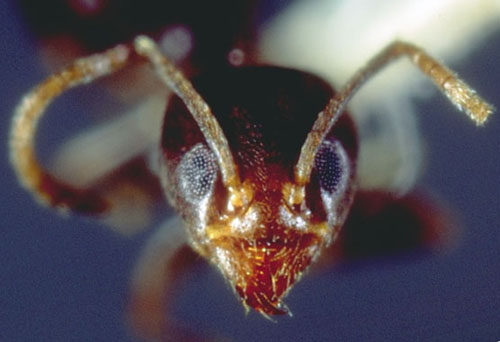
References:
Argentine Ant: Factsheet. October 10 2000. (20 October 2004). Forest and Bird. http://www.landcareresearch.co.nz/research/biosecurity/stowaways/antfactv3.pdf .
Buczkowski, G., Vargo, E., and J. Silverman. The diminutive supercolony: the argentine ants of the southeastern United States. Molecular Ecology. 13(8): 2235-2242, August 2004.
California Academy of Sciences. 2004. (20 October 2004). Ants: Hidden Worlds Revealed. http://www.calacademy.org/naturalhistory/ants.html.
Fischer, R.N., A.V. Suarez, and T.J. Case. Spatial Patterns in the abundance of the Coastal Horned Lizard. Conservation Biology. 16(1): 205-215, February 2002.
Hee, J.J., D. Holway, A. V. Suarez, and T. J. Case. Role of propagule size in the success of incipient colonies of the invasive argentine ant. Conservation Biology. 14 (2): 559-563, April 2000.
Holway, David. Distribution of the Argentine ant (Linepithema humile) in Northern California. Conservation Biology. 9 (6):1634-1637, December 1995.
Holway, David. Role of abiotic factors in governing susceptibility to invasion: a test with Argentine ants. Ecology 83: 1610-1619.
Krushelnecky, Paul. April 2, 2004. (20 October 2004). HEAR Argentine Ant Harmful Non-Indigenous Species (HNIS) Report. http://www.hear.org/hnis/reports/hnis-linhum.pdf.
Krushelnycky, Paul and Andrew Suarez. April 20, 2004. (20 October 2004). Global Invasive Species Database, Linepithema Humile (Insect). http://www.issg.org/database/species/ecology.asp?si=127&fr=1&sts=.
Laakonen, J., R. Fisher, and T.J. Case. Effect of land cover, habitat fragmentation, and ant colonies on the distribution and abundance of shrews in Southern California. Journal of Animal Ecology. 70 (5): 776-778, September 2001.
Pacific Ant Prevention Plan. March 2004. (20 October 2004). Pacific Invasive Ant Group (PIAG) on behalf of the IUCN/SSC Invasive Species Specialist Group (ISSG). http://www.issg.org/database/species/reference_files/PAPP.pdf.
Manaaki Whenua Landcare Research. 2004. (20 October 2004). Linepithema Humile (Mayr) Argentine Ant Identification. http://www.landcareresearch.co.nz/research/biosecurity/stowaways/key/linhum_id.asp#Identification.
Robertson, Hamish. 2004. (20 October 2004). Linepithema Humile (Argentine Ant). Iziko Museums of Cape Town. http://www.museums.org.za/bio/ants/dolichoderinae/linepithema_humile/.
Suarez, Andrew, David Holway, and Ted J. Case. Patterns of spread in biological invasions dominated by long-distance jump dispersal: Insights from Argentine ants. PNAS. 98 (3): 1095-1100, January 30, 2001.
Tsutsui, Neil D. and Andrew V. Suarez. The Colony Structure and Population Biology of Invasive Ants. Conservation Biology. 17 (1): 48-58, February 2003.
Tsutsui, N. D., Suarez, A.V. Holway, D.A., and T.J. Case. Relationships among native and introduced populations of the argentine ant (Linepithema humile) and the source of introduced populations. Molecular Ecology. 10 (9): 2151-2161. September 2001.
Picture References:
Photo 1: http://waynesword.palomar.edu/ww0403.htm
Photo 2: http://www.pubmedcentral.nih.gov/articlerender.fcgi?artid=14714
Photo 3: http://www.terro.com/ant_id2php
Photo 4: http://www.museums.org.za/bio/ants/dolichderinae/linepithema_humile/
Photo 5: http://www-biology.ucsd.edu/news/images/mcliz8.jpg (Chris Brown, USGS)
Photo 6: http://www.issg.org/database/species/ecology.asp?si=127&fr=1&sts=